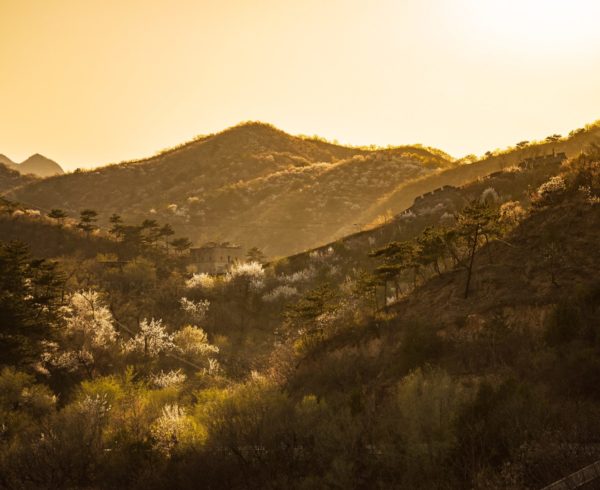At this point, I’d like to offer two things to help us reengage with the Scriptures and Jesus’ teaching so that as we do, we might recognize where Middle Platonism and Early Christian Gnosticism has made inroads into our own faith, including our views on the atonement, and then allow this new learning to help reshape those views. First, I’d like to look at some of the biggest and most meaningful themes of Scripture (I get this is somewhat subjective). Second, which I will get into in the next article, I will look at seven of the most prominent Stories of Scripture.
Ok, let’s consider some of the biggest themes of the Bible.
Creation, Temples and Images
Part of the problem with early Christian Gnosticism is it is simply not rooted in ancient Judaism and the early Jewish-Christian Jesus’ movement of the first century, nor is it what they believed. In contrast, ancient Hebrews and early Jewish Christians both believed that God created the entire cosmos—both the material and the immaterial world—the heavens and the earth. Both the heavens and the earth were two dimensions of God’s good creation. According to Genesis 1, God said this of what he had created: “It is good” and later “It is very good.” It was not merely that the immaterial world was good. It was that all of creation (both the material and immaterial world) was good. More than that, in the Bible, God is portrayed as having an intention and purpose for creation and humankind was right smack in the middle of that intention/purpose. This is a critical point (you may want to reread it a few times so that it sinks in).
Genesis 1:28-31, seen through the lens of Jesus’ teaching about servant leadership, opens up the possibility that whatever “ruling” we do as human beings within creation, must be understood (at the very least) as God’s calling on us to be caretakers of creation—to serve creation. Remember, this place is God’s good creation, and we are responsible to “rule” it wisely. We are not here to abuse it or exploit it. Serious conversations about sustainability should be on the table for followers of Jesus and his Way. Doing whatever the hell we want to do to on this earth “because God is going to burn it anyway” is antithetical to the New Testament’s vision of servant leadership and to Jesus himself. Remember, all of creation (according to the Genesis account) was created by God and God called it very good. This is his handiwork. We should damn well stop treating it like we don’t care what happens to it.
Now, let’s talk about temples and images. As with any system of worship in the ancient Near East, temples and shrines were the places where you meet with gods and goddesses. And after you construct a temple or shrine, you place an image inside it that represents that god or goddess. We call these images idols. The job of any image was to reflect and represent the god.
In the creation narratives in Genesis, creation itself is a type of temple. And the garden, Eden, was a type of temple within the larger temple of creation. Follow me; I’m going somewhere with this. The image God placed within the garden of his “very good” creation was humankind. In the Story, human beings are called images of God—understood as objects within Eden (and within the larger creation itself) that represent and reflect their maker.
Within creation, human beings are to be God’s representatives on the earth. Let that sink in. Again, not so that we could do whatever we want. Being an image is a responsibility. It means we are to be responsible in how we live and how we lead others, even in how we care for the earth. There’s a small but profound passage in Romans 8 where Paul the apostle says that “creation itself longs for the sons and daughters of God to show up (to be revealed).” In other words, mankind’s failure to be images affected even creation itself (not just our souls or spirits) and creation longs for the day of the full reversal where we begin to live into that original calling as image bearers of God. Let that sink in.
So, when Paul the apostle, says “If anyone is in the Messiah, there is a new creation! Old things have gone, and…everything has become new!” and “God has created us in King Jesus for the good works he has prepared, ahead of time, as the road we must travel” (2 Corinthians 5:17; Ephesians 2:10), we are witnessing creation language recast through the lens of Jesus’ death on a cross. For Paul, your identity as an image bearer has been recast and repurposed in the person of Jesus Christ. Whatever was lost due to sin has now been transformed. We can now, once again, reflect and represent the Creator because of Jesus Christ. God took the old stuff of first creation and repurposed it in the Messiah Jesus.
Heaven and New Creation
Heaven is important but very misunderstood. Within ancient Judaism and early Christianity, heaven was understood as God’s space (or where God and angelic beings are). In fact, the Hebrew and Greek word for heaven was sometimes used as a replacement for God.
Fast forward to today’s contemporary Christian culture. For many Christians today, the whole point of the gospel and the atonement is to “go to heaven when we die.” The language we’ve used for the last thousand years is telling. For many Christians, the goal or destination of “getting saved” is leaving (or escaping) the earth to live in heaven. But that’s not a narrative thread within the ancient texts of Scripture.
According to the Scriptures, the goal is not to escape the earth in order to get to heaven nor is it the destruction of the present earth and heavens. According to Jesus’s prayer, the goal is that God’s kingdom (understood as God’s reality, presence and way of leadership) will come onto the earth as it already is in heaven. Jesus’ prayer suggests that God’s kingdom is about God filling the earth with his loving rule. Paul later develops this idea calling it new creation. Both Jesus and Paul seem to be recalling a prophecy in Isaiah where the prophet reveals God’s intention to someday fill the entire earth with his presence and the knowledge of him. Isaiah further prophecies that at some future point in time, the lion will lay down with the lamb and swords (agents of war) will be turned in plow shares (agents of agricultural cultivation) and further, that nations would no longer learn war.
Unless we quickly forget, this place called planet earth (a material physical world) was created by God, and God called it very good according to Genesis. There is a throughline narrative thread in the Bible that God is not the kind of being that so easily gives up on his own creation. While it’s true there are some narrative threads within the larger Biblical Story that may lead us to assume otherwise (I’m not denying that), we also find within the larger Story a storyline pushing back strongly at that suggestion. We find hints of it in the books of Isaiah and Jeremiah, but it explodes with precision in the life of Jesus. Jesus’ Story tells us that God is the kind of being who takes something that has been tainted and tarnished and broken and sick and renews, heals and remakes it. But he doesn’t get rid of it. In this thread, God doesn’t waste stuff he makes. He remakes the old, repurposes it and it becomes something new. God doesn’t waste his creation. That is the entire point of the New Testament vision of bodily resurrection and the renewal of all things.
The ultimate aim, we might say, in the atoning death of Jesus Christ is not that God is abandoning the world, only helping us to escape it and taking us to “the great by and by” (as the old hymnals state); it is that God has reclaimed his creation—the one we have chosen to abandon through exploitation and pollution—by remaking it. And in the middle of humanity’s historical timeline, God has already begun that process through the death and resurrection of Jesus, reversing the damage done by sin and evil and death so that we might again be fully functioning images of God causing our lives and creation itself to thrive.
Resurrection
The New Testament authors, especially Paul, are emphatic on this point. God will remake everything “in a flash, in the twinkling of an eye…the dead…will be raised.” And let me be clear, the resurrection was not understood—at least with the earliest Christians—as being a resurrection of the spirit alone or some kind of escape route to support neo-Platonic philosophy or gnostic enlightenment. Resurrection of the body and spirit/soul is what Jesus and the New Testament authors put forward. Resurrection is that whatever was dead is physically alive again, but alive in a way that is more alive than it once was. Our old dead bodies will be remade. And according to Luke, John and Paul, we can expect that God will do the same thing for all creation (yes, your dog who died…yes, the vegetation and the trees and the oceans and ocean life and the deforested land and burned up regions of the earth). Luke the doctor referred to this as the “renewal of all things” in Acts 1. John said, “we will be like him” (meaning, raised from the dead). Paul said, “we will all be raised imperishable.” John also said, “there will be a new heavens and new earth.” But again, this is to be understood as the new stuff recreated with the old stuff, not a destruction of it (See NT. Wright’s Surprised by Hope: Rethinking heaven, the resurrection and the mission of the churche for a more detailed accounting of Christian teaching on resurrection; or if you like the much more involved huge scholarly book by Wright see The Resurrection of the Son of God).
My point is this. According to the early Christian leaders who wrote the New Testament letters, God is not intending to get rid of creation or abandon creation, but to remake and reclaim creation. All creation. The material and immaterial parts.
All of it.
New Creation Work
In a very interesting place in his letter to a 1st century Christian church in Corinth—a church community made up of very human, very immoral, very arrogant and prideful, very screwed up people who happened to identify as Jesus’ followers—Paul of Tarsus gives the following challenge: “Now that you’ve considered the hope we have in the resurrection of the dead, be firmly fixed, unshakeable, always full to overflowing with the Lord’s work, because as you know, the work you’re doing will not be worthless” (1 Corinthians 15:58).
According to Paul, as we consider our new creation status in the Messiah Jesus and our resurrection hope in him, we should treat our work on this earth as incredibly important, even divinely inspired. For Paul, the Lord’s work wasn’t merely “going to church” and doing a few outwardly Christian duties and call it good. It was living life through the lens of the hope we have for this world and for our lives. For Paul, practically everything we do on this earth can be done through the lens of Jesus’ death and resurrection. What we do in our bodies, with our two hands, with our eyes, on the job or in our homes or in our neighborhood’s matters. It’s all the work of the Lord. And, according to Paul, it will somehow be combined with God’s new world in the future.
Summing It Up
Knowing these critical themes of Scripture, do you see how the downsized version borrowed from early Christian Gnosticism has tainted so much of how we see the Biblical narrative, perhaps even your own atonement theology? Perhaps take some time to write out how your views may have been affected by the foreign Gnostic Story and how this new understanding of the key themes of Scripture has caused you to reconsider better ways of understanding God, creation, heaven, and what it means to be images of God in God’s good world.
So Which Atonement Theory is Correct?
Whichever theories deal with and make sense of these themes would be a great place to start.
Click here for the next post in the series.
Here’s the Atonement Series Title Line-Up from start to finish
- My evolving understanding of Jesus’ death
- FaithRethink Series on the Atonement Returns
- 7 atonement theories from church history
- Hijacking the Biblical Story of the Atonement
- Reengaging with the Bible’s Biggest Themes (page you’re on now)
- 7 Bible Stories you think you know but don’t
- Cruciform atonement theory: How Jesus’ death on a Roman cross changes everything
- Questions and answers about the atonement







